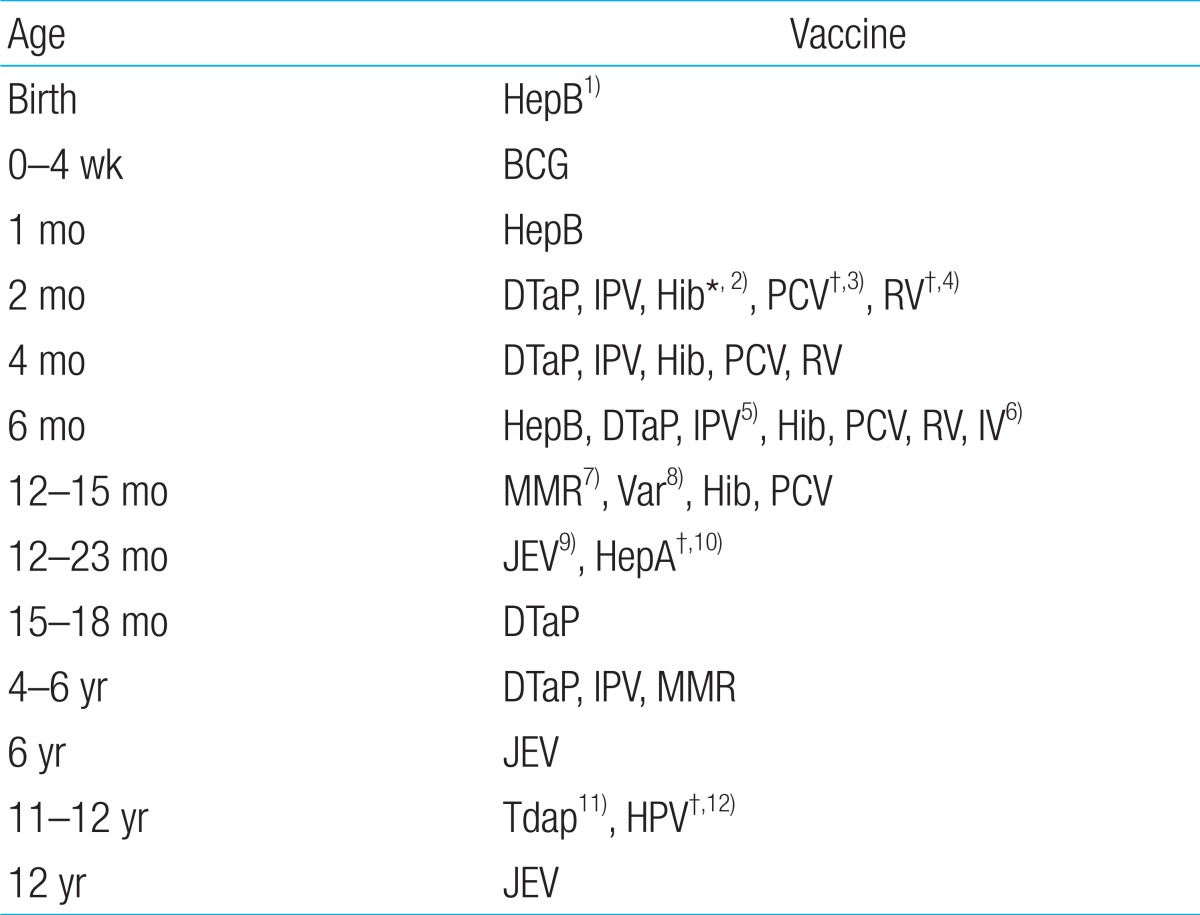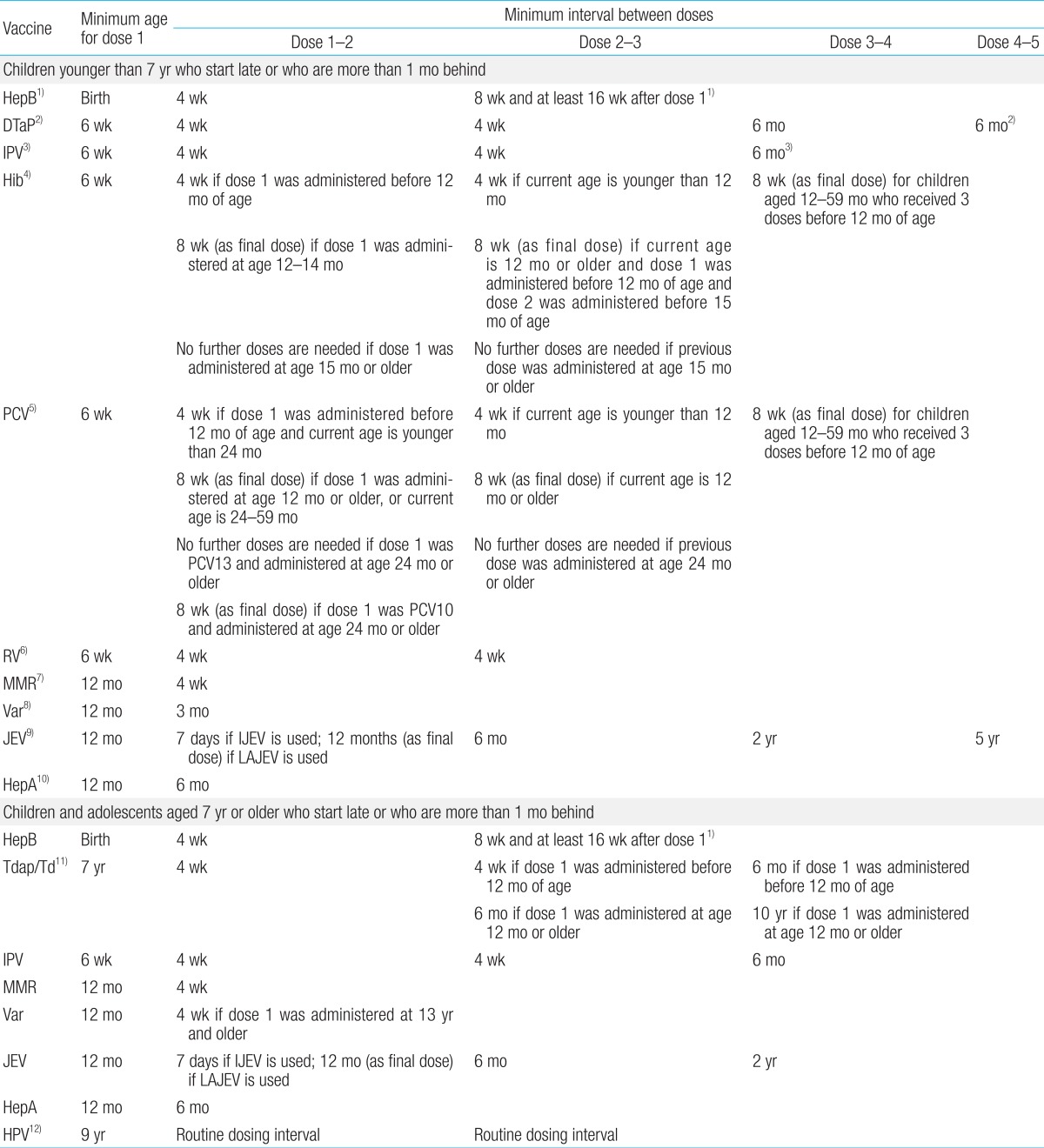Recommended immunization schedule for children and adolescents: the Korean Pediatric Society, 2013
Article information
Abstract
This article contains the recommended immunization schedule by the Committee on Infectious Diseases of the Korean Pediatric Society, updated in March 2013, when Haemophilus influenzae type b vaccine is now included in the National Immunization Program in Korea. It also includes catch-up immunization schedule for children and adolescents who are behind the recommended schedule. These schedules are a minor revision of the corresponding parts of Immunization Guideline, 7th edition, of the Korean Pediatric Society, released in 2012. Pediatricians should be aware of these schedules to provide adequate immunization to Korean children and adolescents.
Introduction
The aim of this article is to introduce the recommended immunization schedule for Korean children and adolescents to pediatricians, general practitioners, vaccine providers, and other medical personnel or related researchers. The schedule shown here is based on the schedule recommended by the Committee on Infectious Diseases of the Korean Pediatric Society (KPS), 20121), and updated by the committee in March 2013. Haemophilus influenzae type b vaccine has been recommended by KPS since 2002 and is newly included in the National Immunization Program in Korea this year. A quadrivalent meningococcal polysaccharide-protein conjugate vaccine (Menveo, Norvatis, Basel, Switzerland), introduced since 2012 is recommended for persons at increased risk for meningococcal diseases aged 2 to 55 years and details are described in the corresponding chapter of KPS Immunization Guideline, 2012.
Recommended immunization schedule
The schedule shown below (Table 1) is for persons aged 0 to 18 years without delayed vaccination. For further KPS guidance on the immunization of each vaccine, refer to each of the vaccine chapters of the KPS Immunization Guideline, 2012, and the KPS website (http://www.pediatrics.or.kr). Important updates on the guideline will be also announced through the KPS newsletters and the KPS website.
Catch-up immunization schedule
For children and adolescents whose vaccination has been delayed for more than one month, the schedule should be referred to the catch-up immunization schedule (Table 2). The schedule comprises two parts; for infants and children aged 0 to 6 years and for children and adolescents aged 7 to 18 years.
Conclusion
The KPS recommends at present that all children and adolescents in Korea receive vaccination according to the schedules provided in this article. Pediatricians should be aware of these updated schedules and advise parents and caregivers on the proper immunization.
Notes
No potential conflict of interest relevant to this article was reported.

